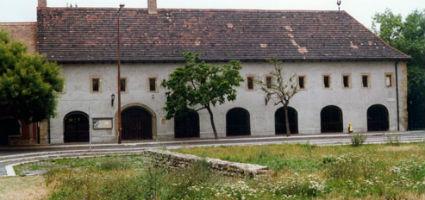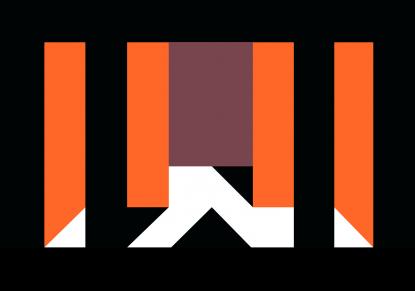2024. April 19. Friday
Budapest Gallery Exhibition Hall - Budapest
 |
Address: 1036, Budapest Lajos u. 158.
Phone number: (1) 388-6784
E-mail: info@budapestgaleria.hu
Opening hours: Tue-Sun 10-18
|
The exhibition has closed for visitors.
2016.06.23. - 2016.06.24.
The pictorial language of Péter Paizs’s (1957–2015) oeuvre is geometric and abstract, its medium is painting, its style is Hard Edge, and its forum is the solo exhibition.

Colour-Space-Time focuses on the eight most influential exhibitions of works by Péter Paizs between 1984 and 2014. Each exhibition presented an individual series and a painterly proposition. These exhibitions, which can be seen as milestones in his career, were held in non-profit galleries which played emblematic roles in the institutional structure of the 1980s and 1990s. Many of these galleries have since closed, but the ones that are still open continue to function as important scenes in the contemporary art world.
Initially, the subject matter of the series was the complicated system of forms and colours. Later, the conjuring of the square and of black-and-white – as a fundamental visual experience – came to the foreground. The last period of the oeuvre is characterized by conceptual series that were based on the artist’s research on colour and optics. The exhibition includes one particularly distinctive item, namely a scale-model of a site-specific installation dating from this last period on the theory of colours. Paizs made the model for his exhibition at FUGA in 2014.
The eight rooms of the Budapest Gallery will therefore illustrate the essence of these important exhibitions in both chronological and thematic sections, while also providing a complete overview of Paizs’s creative periods.
“His pictures consist of geometric elements painted with monochrome uniformity, with edges that are so hard that at one time an entire movement was named after this technique. The few shapes and colours separate from one another in a hard and sharp manner, tools reduced to their fundamental elements, the interrelationships of which preoccupy the painter.” (Sándor Radnóti)

Colour-Space-Time focuses on the eight most influential exhibitions of works by Péter Paizs between 1984 and 2014. Each exhibition presented an individual series and a painterly proposition. These exhibitions, which can be seen as milestones in his career, were held in non-profit galleries which played emblematic roles in the institutional structure of the 1980s and 1990s. Many of these galleries have since closed, but the ones that are still open continue to function as important scenes in the contemporary art world.
Initially, the subject matter of the series was the complicated system of forms and colours. Later, the conjuring of the square and of black-and-white – as a fundamental visual experience – came to the foreground. The last period of the oeuvre is characterized by conceptual series that were based on the artist’s research on colour and optics. The exhibition includes one particularly distinctive item, namely a scale-model of a site-specific installation dating from this last period on the theory of colours. Paizs made the model for his exhibition at FUGA in 2014.
The eight rooms of the Budapest Gallery will therefore illustrate the essence of these important exhibitions in both chronological and thematic sections, while also providing a complete overview of Paizs’s creative periods.
“His pictures consist of geometric elements painted with monochrome uniformity, with edges that are so hard that at one time an entire movement was named after this technique. The few shapes and colours separate from one another in a hard and sharp manner, tools reduced to their fundamental elements, the interrelationships of which preoccupy the painter.” (Sándor Radnóti)
